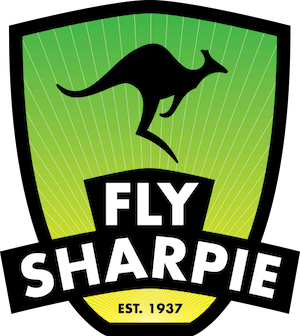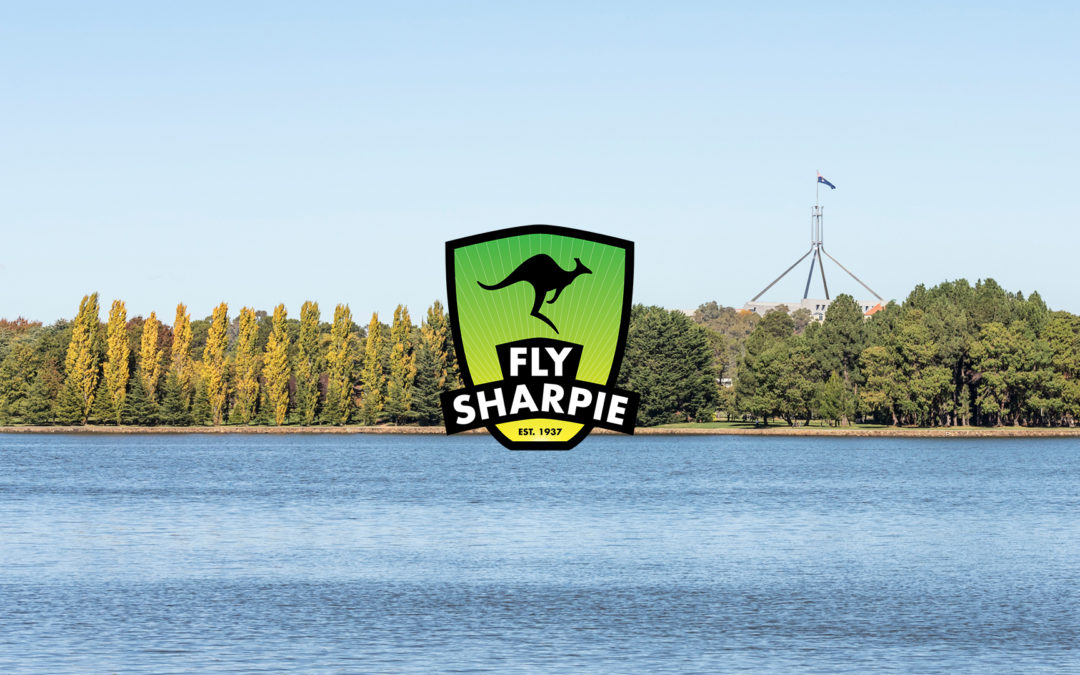THE SECRETS TO WINNING
As the current champion I have been asked to divulge the secrets to winning the Australian Sharpie Championship. Well I don’t think there are to many secrets to divulge so I will write a bit about how we set the boat up and a bit about what I think are the keys to success in big regattas.
It is certainly a great honour to be the Sharpie champion and something I have been working towards for a number of years since my first regatta in Ceduna back in I989. That’s the first tip- perseverance. Four Sharpies later and a great deal of trial and error I think I have refined the art of setting up the boat. Just about everybody else has as well. All the top boats in South Australia are looking pretty much the same all though this is set to change this year with the first all wooden boat for many years set to hit the water.
Back in October last year I arrived back in Australia after a bit of an extended trip overseas and a break from Sharpies. Whilst overseas I spent a year in Canada mostly sailing 505’s, Albacores and Lasers and certainly learnt a lot about sailing in light and variable winds and how lucky we are in Adelaide with our great sailing conditions. At that stage I was amazingly enthusiastic about sailing Sharpies again but that all fell apart on my arrival back home when my forward hand bailed for greener pastures (his great loss in retrospect). To compound the problems Miles Stevens from Port Lincoln made me an offer I couldn’t refuse for “Savage Mood Swings”. Thus no boat and no crew only 8 weeks from the nationals.
Fortunately we were able to turn it around and after rapid negotiations both a new crew and new boat were forthcoming. Contender sailor Andrew Chisholm made the best decision of his sailing career to join Angus Bruce and myself giving a combined crew weight of about 228 kg which turned out to be about perfect for the prevailing conditions we encountered in Melbourne. Big crews are great if a series is consistently heavy but that is rare. I only recall one nationals in the past decade where a heavy crew was a big advantage- that was the Fremantle series in I990.
The boat was standard Macca lay up except with foam substituted for balsa. Despite opinions to the contrary I don’t believe this makes a significant difference. The fit out was essentially similar to my previous boat and to most current SA boats. I can provide details of any systems if anyone wishes. I opted for a mainsheet loop with rope bridle that can be pulled to weather. Others use traveller set-ups and some use end boom sheeting. The choice of system is probably not crucial as long as the boom can be sheeted to the midline and the skipper is easily able to move his weight forward, as attention to fore-aft trim is important in a Sharpie.
We used a proctor stratos stick. This is an excellent mast for relatively lightweight crews but may be a little soft both sideways and fore-aft for the big blokes. They do have a tendency to soften with age so require intermittent replacement. We increase low down stability by adding adjustable “D I” stays to spreader level. This was a late refinement and I am still not really up to speed on when/how to use them. In the light- moderate breezes and confused chop in Melbourne we found tensioning the D I’s kept the bottom of the main powered up and reduced sideways movement of the middle of the mast.
Spreader measurements are probably only relevant to proctor users but were I35 mm rake measured to the back of the mainsail track from a line between the stays and 360-390 mm length. Shortening spreaders certainly helps if the boat feels to bound up in moderate- heavy conditions. Since Melbourne I have shortened the spreaders further and that has helped our speed in moderate winds significantly.
Other mast measurements are spreaders 2980 mm, stays 4940 mm, trap 5200 mm and lowers 760 mm all measured from deck level. I don’t tend to measure rake but adjust it to feel and helm so I don’t have a mast rake measurement to disclose. Once rake is set during pre start tuning I rarely change it except to pull the mast forward downwind unless there is a major change in wind velocity.
K-A sails in Adelaide made our sails with no major modifications from their standard patterns. I tend to use very flat entry headsails as it suits my sailing style but can be difficult to steer to. Foils were standard Young Marine.
Our preparation for the series was limited to sailing most weekends and Wednesday evenings in the lead up to the nationals. My years of sailing twice during the week are over but maybe all that work has finally paid off. However the lack of time on the water together showed in our very average boat handling. Fortunately this was not critical in the predominantly light/moderate conditions in Melbourne.
The most important factor in our success was undoubtably the strength of the competition from Adelaide and in particular at our home club Brighton. Brighton ended up with 5 of the top I2 finishers at the Nationals so club races were tough and great preparation. With most boats having very similar rigs the class is verging on being completely one design in SA. This makes sailing smart and not making mistakes vital, as boat speeds are similar. We were certainly not the fastest boat throughout the wind range but we had reasonable speed and made few major mistakes and were consistently at the top of the fleet. That is the way to win major regattas.
For this season I will continue to sail Sharpies in Adelaide but will not be attending the National Championship in Brisbane. Safe travelling and good luck to all those who will be competing and I look forward to seeing everyone in Port Lincoln for the 2000-200I Championship

